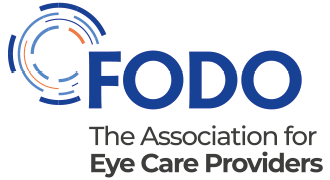Updates
Background
Drivers in the UK are required to meet minimum vision standards depending on the type of licence they hold. Recent accident reports have led to a coroner's report calling for more regular sight testing and better implementation of current standards. Currently group 1 drivers have their vision assessed when they obtain their license but then the only other checks are 3 yearly self-assessments after the age of 70 years.
Many occupations have additional vision requirements, known as occupational vision standards. These are usually set by the relevant regulatory body or employer.
This information tells you about the driving and occupational vision standards members ask us about most. If you would like us to add an occupation, please email [email protected].
The Driver and Vehicle Licensing Agency (DVLA) sets vision standards for drivers in England, Scotland and Wales (Northern Ireland standards are set by the Driver and Vehicle Agency (DVA).
Vision standards for drivers refer to Group 1 and Group 2 licence holders:
- Group 1 includes cars and motorcycles
- Group 2 includes large lorries (category C) and buses (category D).
Group 1 drivers - minimum standards
The DVLA states that all drivers must meet the following standards (with corrective lenses if required):
- Visual acuity of at least Snellen 6/12 with both eyes open or in the only eye if monocular and
- A driver must be able to read the registration of a stationary vehicle in good daylight at a distance of 20 metres on a car registered since 1 September 2001 where letters and numbers are 79mm high by 50mm wide. (For vehicles pre-2001 where the letters and numbers are slightly larger the test distance is 20.5 metres) and
- Have a minimum field of vision as defined in legislation "of at least 120° on the horizontal measured using a target equivalent to the white Goldmann III4e settings. The extension should be at least 50º left and right. In addition, there should be no significant defect in the binocular field that encroaches within 20º of the fixation above or below the horizontal meridian".
As a self-help guide, drivers are advised they can review their vision by reading the registration of a stationary vehicle in good daylight at the distances above.
Drivers unable to meet the driving standards must not drive and must notify the DVLA/DVA. It is a criminal offence to drive with vision below the legal standard and invalidates insurance.
Where the DVLA/DVA is aware of a visual problem they may request an assessment to determine fitness to drive. Only the DVLA/DVA can make the decision as to whether the standard is met.
Group 2 - higher vision standards
The risk posed by the vehicles in this group means that higher vision standards are in place.
- Bus and lorry drivers (Group 2) must therefore have a visual acuity (with corrective lenses if required) of at least: Snellen 6/7.5 (Snellen decimal 0.8) in the better eye and Snellen 6/60 (Snellen decimal 0.1) in the poorer eye. If spectacles are required to meet these standards, the total power in any meridian of either lens must not exceed +8 dioptres. Where contact lenses are worn there is no specific limit to power.
- Group 2 drivers are also required to meet higher visual field standards and have a minimum uninterrupted field of vision as defined in legislation of at least 160° on the horizontal measured using a target equivalent to the white Goldmann III4e settings. The extension should be at least 70º left and right. In addition, there should be no significant defect in the binocular field that encroaches within 30º of the fixation above or below the horizontal meridian and no defect present within a radius of the central 30°.
- The standard also specifies that there should be no other impairment of visual function, including no glare sensitivity, contrast sensitivity or impairment of twilight vision.
Other notes
There are reporting and notification requirements for other specific eye conditions. These were last updated in March 2021 and although there have been suggested changes since that time the conditions listed have not been changed. You can read more about each of the following on gov.uk.
- Cataract
- Monocular vision
- Visual field defects (including glaucoma)
- Diplopia
- Nyctalopia
- Colour blindness
- Blepharospasm
- Nystagmus
DVA
The DVA provides this guide to visual standards for driving in Northern Ireland. The DVA also refers readers to the guidance provided by the DVLA as above.
Other guidance
The General Optical Council has provided guidance in line with GMC guidance on how to deal with referring to DVLA/DVA a patient who fails to meet the driving standard. The issues of professional duty and confidentiality are explained and how confidentiality may be breached in certain circumstances. It must be remembered that although an optometrist can advise a patient not to drive only the DVLA/DVA can withdraw a licence. It is important however to stress to a driver who appears to be below the standard that it is a criminal offence to drive when the standard is not met and that their motor or driving insurance may be invalid should they be involved in a traffic incident and to record on the patient record that this advice has been provided.
The GOC provides the following flowchart for notifying DVLA/DVA
https://optical.org/media/xuebjs1k/what-to-do-vision-not-fit-to-drive-flowchart.pdf
The College of Optometrists provides opensource professional guidance on examining patients who drive.
References
The legal eyesight standard for driving (INF188/1) updated Nov 2024 and accessed May 2025
Medical standards for fitness to drive updated September 2024 and accessed May 2025 https://assets.publishing.service.gov.uk › media
DVA, A guide to visual standards for drivers, accessed May 2025.
Vision standards for recruitment might vary so you should check requirements locally. The information below might be useful as a guide.
England and Wales
Home office eyesight standards can be found at
https://www.gov.uk/government/publications/circular-0072019-eyesight-standards-police-recruitment
Scotland
Police Scotland eyesight standards can be found at
https://www.scotland.police.uk/spa-media/1undd24l/eyesight-standard-police-offi.pdf
Northern Ireland
Police Service Northern Ireland vision standards.
The Civil Aviation Authority (CAA) Medical Department issues guidance on visual standards. Pilots are likely to attend for tests with forms to be completed by eye care providers specialising in this area. Details of the requirements can be found at CAA's visual system guidance.


 Patients and public
Patients and public
 Policymakers
Policymakers Members
Members News and views
News and views
